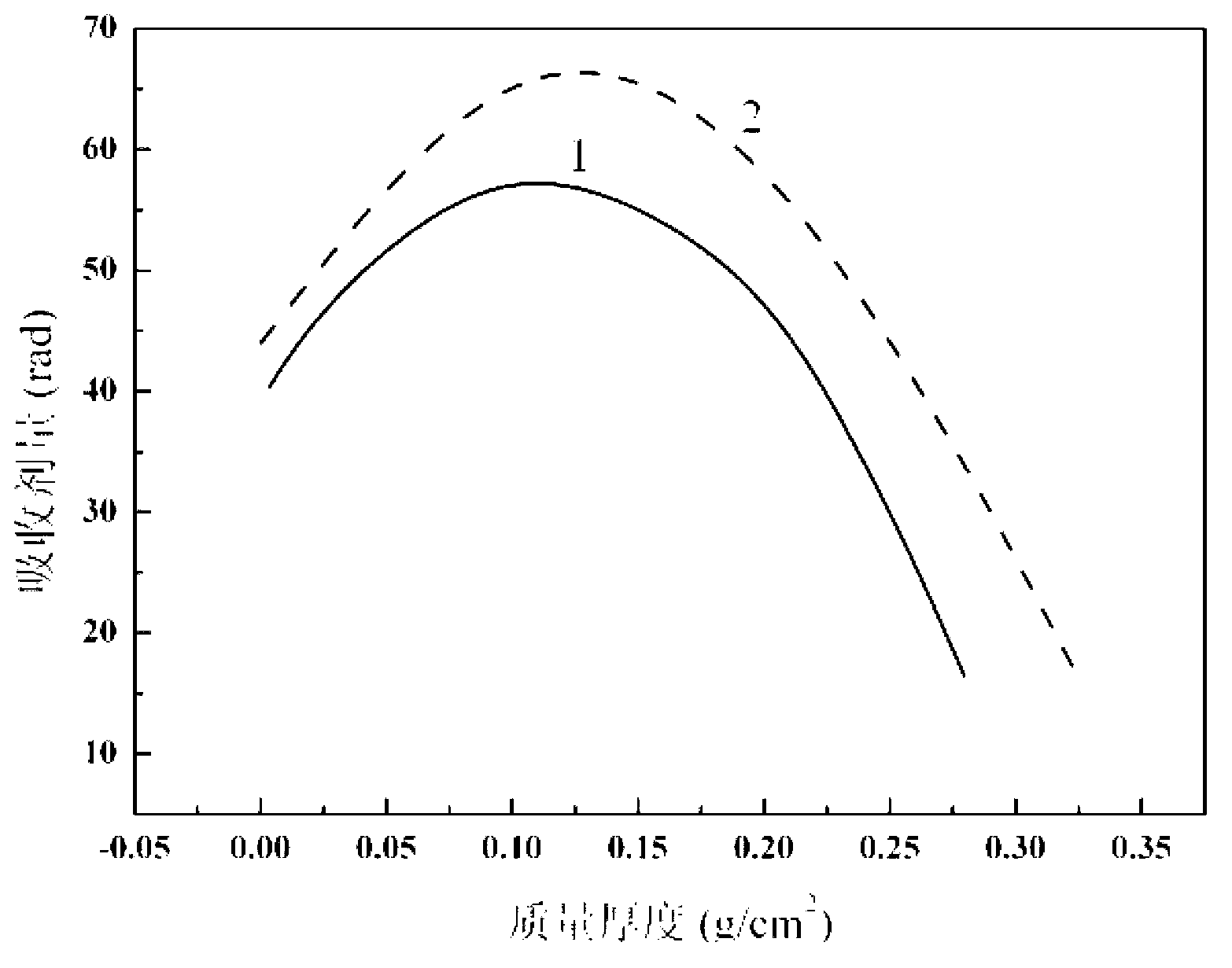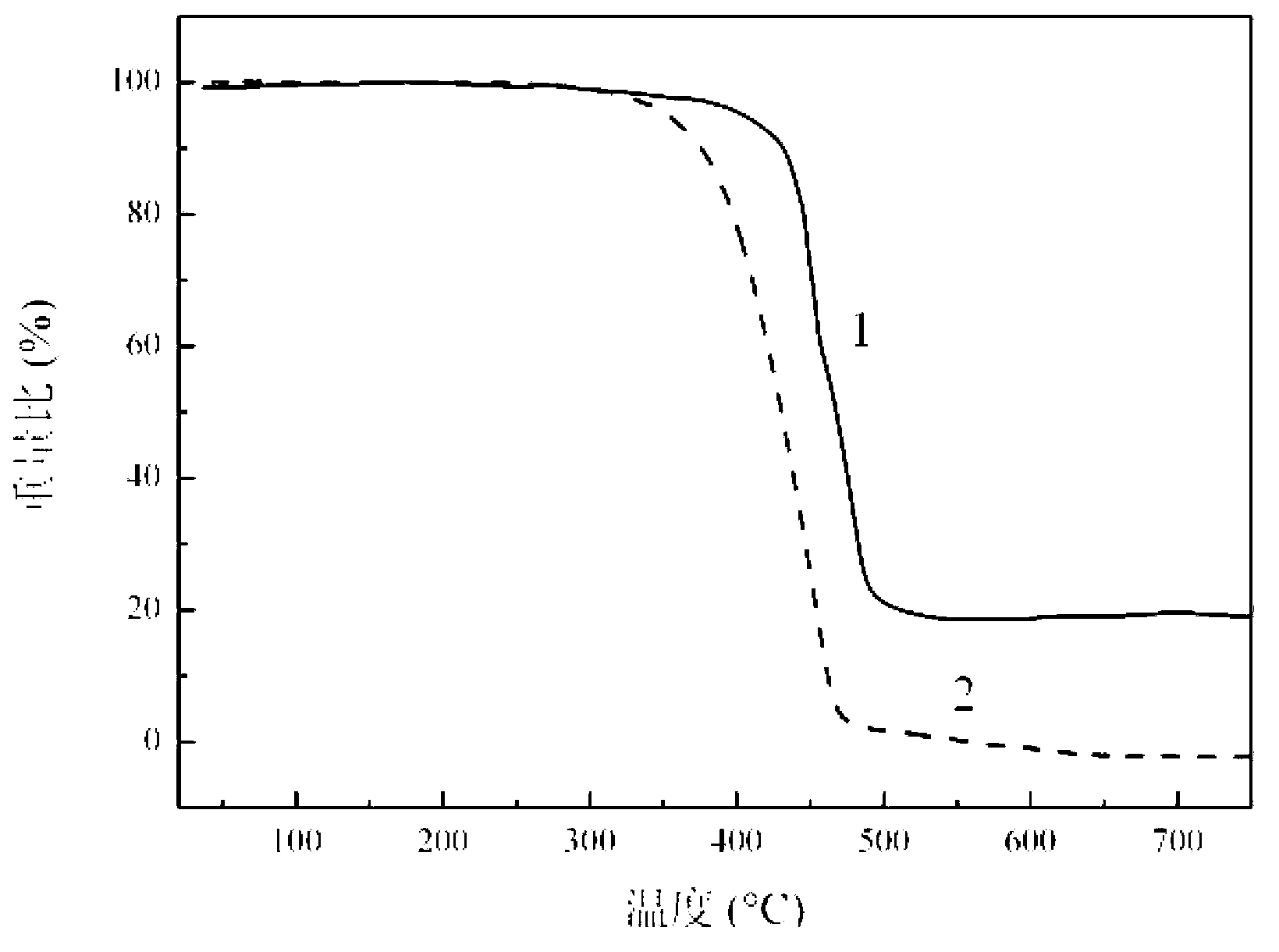Nano-tantalum-doped polyethylene composite material for space electronic radiation protection as well as preparation method and application for same
A technology of electron radiation and composite materials, which is applied in the field of composite materials for space charged particle radiation protection, can solve the problems of high density of aluminum protective layer, restricting the scope of use, and heavy weight of use, so as to improve the effect, increase energy loss, and solve the problem of heavy weight effect
- Summary
- Abstract
- Description
- Claims
- Application Information
AI Technical Summary
Problems solved by technology
Method used
Image
Examples
specific Embodiment approach 1
[0022] Specific Embodiment 1: A polyethylene composite material doped with nano-tantalum for space electron radiation protection in this embodiment is composed of 1-99 parts of polyethylene resin, 1-50 parts of nano-tantalum and 0.5~20 parts of coupling agent.
[0023] The doped nano-tantalum used for space electron radiation protection in this embodiment can improve the performance of the material in other aspects without affecting the original excellent performance of the material. Since polyethylene is used as the radiation protection material, its density is greatly reduced, which effectively solves the disadvantage of the heavy weight of the aluminum protective layer; due to the doping of nano-tantalum, the thermal stability of the polyethylene composite material prepared in this embodiment Compared with pure polyethylene, it is increased by 5%~35%, and the absorbed dose detected by the dose detector after electron irradiation is reduced by 0.1~0.7 times compared with pur...
specific Embodiment approach 2
[0025] Specific embodiment 2: The difference between this embodiment and specific embodiment 1 is that the coupling agent includes silane coupling agent, titanate coupling agent, aluminate coupling agent, metal composite coupling agent, One or more of the phosphate coupling agent and the borate coupling agent are mixed in any ratio. Others are the same as in the first embodiment.
specific Embodiment approach 3
[0026] Specific embodiment three: the difference between this embodiment and specific embodiment one or two is that the polyethylene resin is one or more of low-density polyethylene, high-density polyethylene, and ultra-high molecular weight polyethylene resin. Mix in any ratio. Others are the same as in the first or second embodiment.
PUM
| Property | Measurement | Unit |
|---|---|---|
| density | aaaaa | aaaaa |
| particle diameter | aaaaa | aaaaa |
| density | aaaaa | aaaaa |
Abstract
Description
Claims
Application Information
 Login to View More
Login to View More - R&D
- Intellectual Property
- Life Sciences
- Materials
- Tech Scout
- Unparalleled Data Quality
- Higher Quality Content
- 60% Fewer Hallucinations
Browse by: Latest US Patents, China's latest patents, Technical Efficacy Thesaurus, Application Domain, Technology Topic, Popular Technical Reports.
© 2025 PatSnap. All rights reserved.Legal|Privacy policy|Modern Slavery Act Transparency Statement|Sitemap|About US| Contact US: help@patsnap.com



